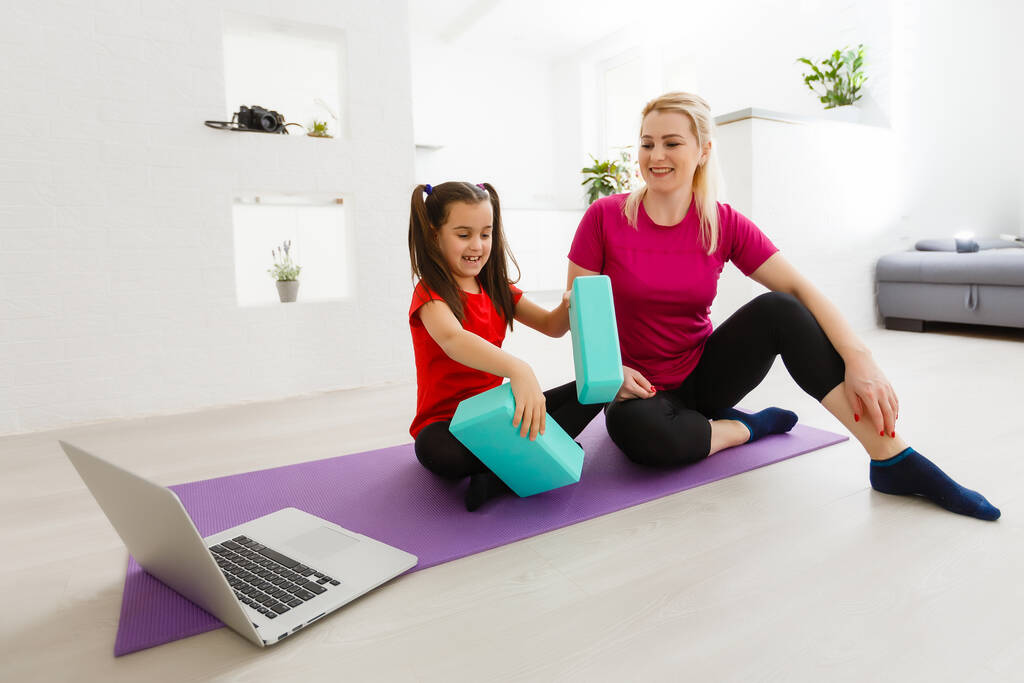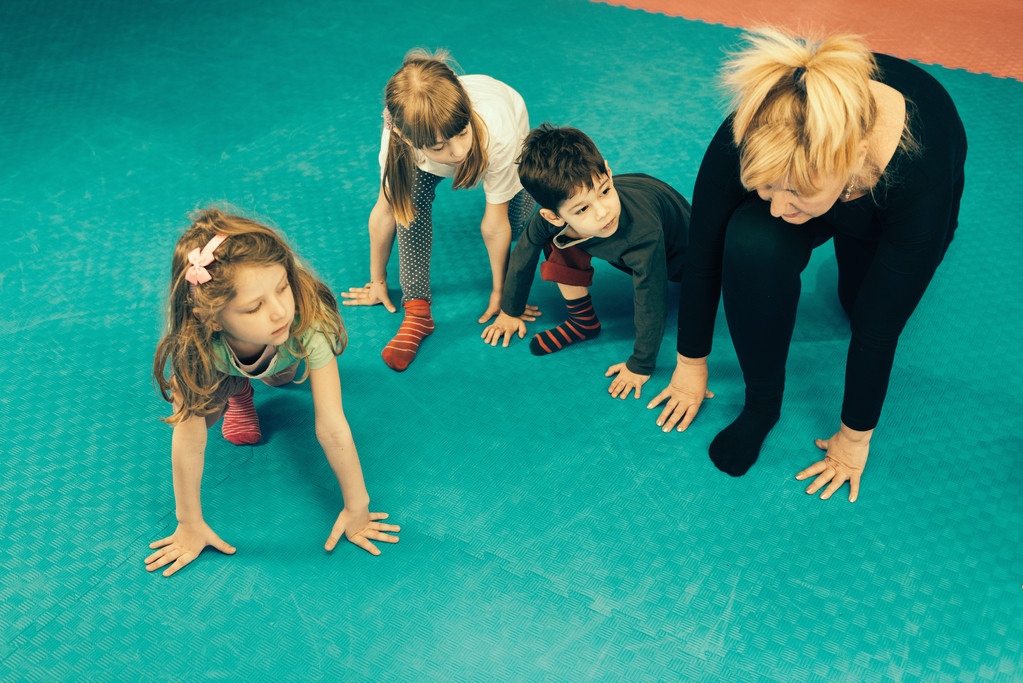Discover a comprehensive step-by-step guide on how to effectively teach physical fitness to 6-7 year old children.
Teaching Physical Fitness to 6-7 Year Old Children: A Step-by-Step Guide
Teaching physical fitness to 6-7 year old children is an exciting and important endeavor. At this age, children are full of energy and curiosity, and it’s crucial to harness that energy and guide them towards a healthy and active lifestyle. In this step-by-step guide, we will explore the various aspects of teaching physical fitness to young children, from understanding its importance to creating a safe and engaging fitness environment. Let’s dive in!

Understanding the Importance of Physical Fitness for Children
Physical fitness isn’t just about looking good or being strong. It plays a vital role in the overall development of children. Regular exercise can enhance their balance, coordination, and motor skills. It also helps strengthen their muscles and bones, boosting their physical growth. Moreover, physical activity has a positive impact on mental health, reducing stress and improving mood.
Children are naturally full of energy and curiosity, and physical activity provides an outlet for their boundless enthusiasm. Whether it’s running, jumping, or playing sports, exercise allows children to explore their physical capabilities and push their limits. This sense of accomplishment and self-discovery builds their confidence and self-esteem, setting them up for success in other areas of life.
The Role of Exercise in Child Development
Exercise is not just a way to burn off energy; it’s a crucial tool for child development. When children engage in physical activities, they learn how to control their bodies, develop spatial awareness, and improve their hand-eye coordination. These skills are not only important for their overall growth but also for participating in various sports and activities as they grow older.
Furthermore, physical fitness promotes cognitive development in children. Studies have shown that regular exercise improves attention span, memory, and problem-solving skills. This is because physical activity increases blood flow to the brain, delivering oxygen and nutrients that support brain function. So, encouraging children to be physically active not only benefits their bodies but also their minds.
Health Benefits of Regular Physical Activity for Kids
Regular physical activity has numerous health benefits for children. It helps strengthen their cardiovascular system, reducing the risk of heart diseases later in life. Exercise also improves their lung capacity and helps maintain a healthy weight. Additionally, physical activity enhances their immune system, making them less prone to illnesses. So, it’s clear that investing in physical fitness for young children is a worthwhile endeavor.
In addition to the physical and mental health benefits, regular exercise also promotes social development in children. Participating in group activities and sports helps children develop teamwork, cooperation, and communication skills. They learn how to interact with their peers, resolve conflicts, and build relationships. These social skills are essential for their future success in school, work, and personal relationships.
Moreover, physical fitness can serve as a means of self-expression for children. It allows them to explore their interests and talents, whether it’s through dance, martial arts, or other physical activities. By engaging in activities they enjoy, children develop a sense of passion and purpose, fostering their overall happiness and well-being.
Setting Realistic Fitness Goals for 6-7 Year Olds
When it comes to setting fitness goals for 6-7 year olds, it’s important to strike a balance between challenging and achievable. Let’s explore some key aspects of this process.
Age-Appropriate Physical Activities
Avoid pushing children beyond their limits or assigning overly difficult tasks. Instead, focus on activities that are suitable for their age group. Think playful games that involve running, jumping, throwing, and catching. Choose activities that they can enjoy and tackle with enthusiasm.
One age-appropriate physical activity that can be introduced to 6-7 year olds is tag. This classic game not only encourages running and agility but also enhances social interaction and teamwork. Another fun activity is the hula hoop. Children can learn to spin the hula hoop around their waist or try to keep it up in the air for as long as possible. This activity helps improve coordination and balance.
Balancing Fun and Fitness
While it’s crucial to promote physical fitness, it’s equally important to make it fun for children. Incorporate games and challenges that make exercising enjoyable. For instance, turn an obstacle course into an exciting adventure, or create a scavenger hunt that involves physical movements. By infusing fun into fitness, you’ll keep the children engaged and motivated throughout the learning process.
Another way to balance fun and fitness is by introducing dance routines. Children can learn simple choreographies to their favorite songs, which not only improves their cardiovascular endurance but also enhances their creativity and rhythm. Additionally, setting up mini sports competitions, such as relay races or mini soccer matches, can make fitness feel like a friendly and exciting competition.
Furthermore, incorporating technology can also add an element of excitement to fitness activities. Using interactive video games or fitness apps that require physical movements can make exercising feel like playing a game. This not only keeps the children entertained but also helps them develop their motor skills and hand-eye coordination.
Creating a Safe and Engaging Fitness Environment
A safe and engaging fitness environment is paramount when teaching physical fitness to young children. It not only ensures their well-being but also helps them develop a positive attitude towards exercise. Here’s how you can achieve this:
Essential Safety Measures for Kids’ Fitness
Prioritize safety at all times. When setting up the exercise area, make sure it is free from hazards such as sharp objects or slippery surfaces. Take the time to inspect the space thoroughly before each session, removing any potential dangers. Additionally, educate the children about proper warm-up exercises and stretching techniques to avoid injuries. Encourage them to listen to their bodies and stop if they feel any discomfort.
Always supervise the children during physical activities. This not only ensures their safety but also allows you to provide guidance and support. Be vigilant and proactive in addressing any potential risks or unsafe behaviors. Teach the children how to use equipment safely, emphasizing the importance of proper form and technique.
Furthermore, create a positive and inclusive atmosphere where children feel comfortable expressing their concerns or asking questions about safety. Foster an open dialogue and encourage them to share any worries they may have. This will help build trust and ensure a safe and supportive fitness environment.
Making Fitness Fun and Interactive
While safety is crucial, it’s equally important to make fitness enjoyable and engaging for young children. By incorporating various strategies, you can create an environment that captures their attention and enthusiasm:
Use visual aids and props to enhance the fitness experience. Incorporate colorful markers, cones, or hula hoops to create activity stations. These visual cues not only add excitement but also help children understand and follow instructions more easily. Consider using different colors to represent different exercises or movements, making it a visually stimulating experience.
Another way to make fitness interactive is by incorporating music. Music has a powerful impact on mood and motivation. Choose upbeat and energetic tunes that resonate with the children’s interests. You can even create themed playlists to match different activities or incorporate popular songs that they enjoy. By adding music to the fitness routine, you’ll create a lively and enjoyable atmosphere that encourages movement and participation.
In addition to visual aids and music, consider incorporating games and challenges into the fitness sessions. For example, you can design obstacle courses that require children to complete various exercises or movements. This not only adds an element of fun but also helps develop their motor skills and coordination. Encourage friendly competition and provide rewards or recognition for their efforts, further motivating them to participate and excel.
Remember, the key to making fitness fun and interactive is to tailor the activities to the children’s interests and abilities. Take the time to understand their preferences and incorporate exercises or games that align with their individual needs. By doing so, you’ll create a fitness environment that not only promotes physical well-being but also fosters a lifelong love for exercise.
Step-by-Step Guide to Teaching Physical Fitness
Ready to embark on your fitness-teaching journey? Let’s break it down into achievable steps:
Introducing Basic Fitness Concepts
Start by explaining the importance of physical fitness to the children. Help them understand how exercise can make them stronger, happier, and healthier. Use simple language and relatable examples to make these concepts accessible to their young minds.
For example, you can talk about how physical fitness can help them run faster, jump higher, and play their favorite sports with more energy and endurance. You can also discuss how exercise can improve their mood, reduce stress, and boost their self-confidence.
Furthermore, you can explain the long-term benefits of staying physically fit, such as reducing the risk of chronic diseases like heart disease, diabetes, and obesity. Encourage the children to ask questions and engage in discussions to deepen their understanding of these concepts.
Implementing a Daily Fitness Routine
Consistency is key when it comes to teaching physical fitness. Create a daily fitness routine that incorporates a variety of exercises. Include a warm-up session, a mix of cardiovascular activities, strength-building exercises, and cool-down stretches. Keep the routine dynamic and fun to hold the children’s interest.
During the warm-up session, you can lead the children through activities like jogging in place, jumping jacks, or stretching exercises to prepare their bodies for the upcoming workout. This helps to increase blood flow, warm up the muscles, and prevent injuries.
For the cardiovascular activities, you can introduce fun games like relay races, obstacle courses, or dance routines. These activities not only get the children moving but also improve their cardiovascular endurance and coordination.
Incorporate strength-building exercises such as push-ups, squats, lunges, and planks to help the children develop stronger muscles and bones. Teach them proper form and technique to ensure they perform these exercises safely and effectively.
Finally, end the fitness routine with cool-down stretches to help the children relax their muscles and prevent post-workout soreness. Encourage them to focus on deep breathing and gentle stretching exercises like toe touches, shoulder rolls, and seated twists.
Remember to make the fitness routine enjoyable by incorporating music, colorful props, and friendly competitions. This will keep the children engaged and motivated to participate actively in each session.
Monitoring Progress and Adjusting the Fitness Plan
As you guide children on their fitness journey, it’s important to monitor their progress and make necessary adjustments. Let’s explore how you can do this effectively:

Evaluating Children’s Fitness Progress
Regularly assess the children’s fitness levels and track their improvement over time. You can use simple exercises like timed runs or jumping jacks to gauge their endurance and speed. Celebrate their milestones and provide positive reinforcement to keep them motivated.
Adapting the Fitness Plan as Needed
Children are constantly growing and developing. As they become stronger and more capable, adjust the fitness plan accordingly. Gradually increase the difficulty level of exercises or introduce new activities to challenge them further. This way, you’ll ensure that the children continue to progress and stay engaged in their fitness journey.
Teaching physical fitness to 6-7 year old children requires patience, creativity, and a dash of fun. By understanding the importance of physical fitness, setting realistic goals, and creating a safe and engaging environment, you’ll be well on your way to nurturing healthy habits in the next generation. So, lace up those sneakers and get ready to inspire young minds through the power of fitness!



